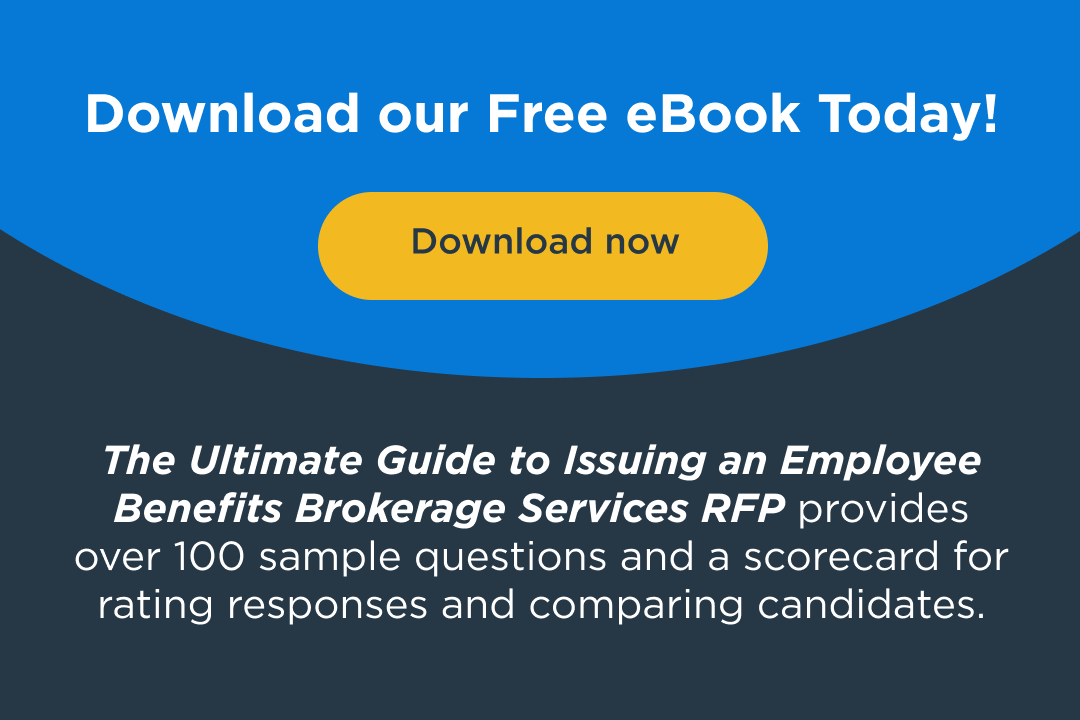When to Carve Out Your Pharmacy Benefit Manager from Your Group Medical Plan
January 31, 2025

As an employee benefits broker, we frequently encounter questions from businesses about optimizing their health care offerings. One topic that often arises is the management of pharmacy benefits. In particular, many companies are considering whether to carve out their Pharmacy Benefit Manager (PBM) from their group medical plan.
This decision can have significant financial and administrative implications.
In this post, we explore the factors influencing this decision and provide insights on when it might be appropriate to separate your PBM from your group health plan.
Understanding Pharmacy Benefits Managers (PBMs) and Their Role
Before diving into the decision-making process, it’s essential to understand what a Pharmacy Benefit Manager (PBM) is.
PBMs are intermediaries that manage prescription drug benefits on behalf of health insurers, Medicare Part D plans, and employers. Their primary functions include negotiating drug prices with manufacturers, establishing formularies, and managing the distribution of medications.
In many cases, PBMs are bundled with group medical plans, creating a seamless experience for employers and employees. However, this arrangement can sometimes lead to complications, particularly when it comes to cost management and transparency.
The Case for Carving Out Your Pharmacy Benefit Manager
1. Rising Prescription Drug Costs
One of the most compelling reasons to consider carving out your PBM is the rising cost of prescription drugs. According to the Kaiser Family Foundation, prescription drug costs have consistently outpaced general inflation and other medical expenses. If your group medical plan is experiencing a sharp increase in pharmacy costs, it may be time to explore a standalone PBM arrangement.
Carving out your PBM allows for more direct negotiations with PBMs focused solely on pharmacy benefits. This can lead to more competitive pricing and potential savings for your organization.
2. Lack of Transparency
Another critical factor is the lack of transparency in PBM pricing models. Many employers find it challenging to understand the true costs associated with their pharmacy benefits due to opaque pricing structures and hidden fees. When PBMs are bundled with medical plans, it can be even more difficult to assess the value being delivered.
By carving out your PBM, you gain the ability to select a partner who prioritizes transparency. This allows for clearer visibility into pricing, rebates, and overall pharmacy spend, enabling more informed decision-making.
3. Customization of Pharmacy Benefits
Employers often have unique needs regarding their employee population, including varying health conditions and medication requirements. When PBMs are part of a larger medical plan, customization options can be limited.
Separating your PBM provides the flexibility to tailor your pharmacy benefits more effectively. You can choose formularies that align with the specific needs of your employees, implement specialized programs for chronic conditions, and design initiatives that promote better medication adherence.
4. Enhanced Data Analytics
Data analytics play a crucial role in managing health benefits effectively. When pharmacy benefits are carved out, employers often have access to more robust data analytics tools. This enables better tracking of prescription drug utilization, identification of high-cost medications, and assessment of employee health trends.
By leveraging this data, you can make more informed decisions about your pharmacy benefits strategy, identify opportunities for cost savings, and improve employee health outcomes.
5. Improved Member Experience
Employee satisfaction is a key component of any successful benefits program. When PBMs are integrated into medical plans, employees may find it challenging to navigate their pharmacy benefits. This can lead to confusion, frustration, and ultimately, lower engagement with their health care options.
A carved-out PBM can offer a more focused and user-friendly experience. Employers can select a PBM known for exceptional customer service, streamlined processes, and easy-to-use online tools, improving overall member experience.
When to Consider Carving Out Your PBM
While the benefits of carving out a PBM are compelling, it’s essential to approach this decision strategically. Here are some indicators that it might be time to consider separating your PBM from your group medical plan:
1. Significant Cost Increases
If you’ve noticed significant cost increases in your pharmacy benefits, particularly if they exceed trends in the broader market, it may be time to explore carving out your PBM. A thorough review of your claims data can help identify the specific drivers of these costs.
2. Employee Feedback
Soliciting feedback from your employees can provide valuable insights into their experiences with pharmacy benefits. If you hear frequent complaints about high out-of-pocket costs, confusing processes, or difficulty accessing medications, it may indicate a need for change.
3. Lack of Negotiating Power
If your current PBM arrangement limits your ability to negotiate effectively or doesn’t provide the necessary leverage to secure competitive pricing, carving out your PBM could provide more negotiating power and opportunities to maximize savings.
4. Market Trends and Competitor Actions
Keeping an eye on industry trends and what your competitors are doing can also inform your decision. If similar organizations are successfully carving out their PBMs and realizing cost savings, it may be worth exploring the same path.
5. Strategic Focus on Wellness
If your organization is increasingly focused on employee wellness and population health management, a standalone PBM can better support these initiatives. By aligning pharmacy benefits with wellness programs, you can enhance overall health outcomes for your employees.
Potential Challenges of Carving Out Your PBM
While there are many advantages to carving out your PBM, it’s essential to consider potential challenges. These can include:
1. Administrative Complexity
Separating your PBM from your medical plan may introduce additional administrative complexities. It will require careful coordination and oversight to ensure seamless integration between the two programs.
2. Transition Issues
Transitioning to a new PBM can be disruptive. It’s important to have a well-thought-out plan for communication and implementation to minimize any negative impact on employees.
3. Cost-Benefit Analysis
Before making any changes, conduct a thorough cost-benefit analysis. Ensure that the potential savings from carving out your PBM outweigh the costs associated with the transition and any new administrative burdens.
Conclusion: Making the Decision to Carve Out Your Pharmacy Benefit Manager
Deciding whether to carve out your Pharmacy Benefit Manager from your group medical plan is a significant choice that requires careful consideration. While there are compelling reasons to pursue this option—ranging from cost control and enhanced transparency to improved member experiences—each organization’s situation is unique.
As an employee benefits broker, we recommend conducting a thorough assessment of your current pharmacy benefit management situation, evaluating your company’s specific needs, and engaging with potential PBM partners who align with your goals. Ultimately, the decision should focus on what best serves your employees and your organization’s bottom line.
By staying proactive and informed, you can make a decision that not only enhances your benefits strategy but also supports the overall health and well-being of your workforce.
HUB Southwest Pharmacy Consulting
HUB’s Pharmacy Consulting practice provides vendor-agnostic, client-centric pharmacy solutions. Our Pharmacy Regional Practice Leaders develop best-fit solutions using Empower for an at-a-glance block pricing as well as the RFP process.
Want to speak to a HUB Southwest Employee Benefits Consultant to learn more about our pharmacy consulting services?


